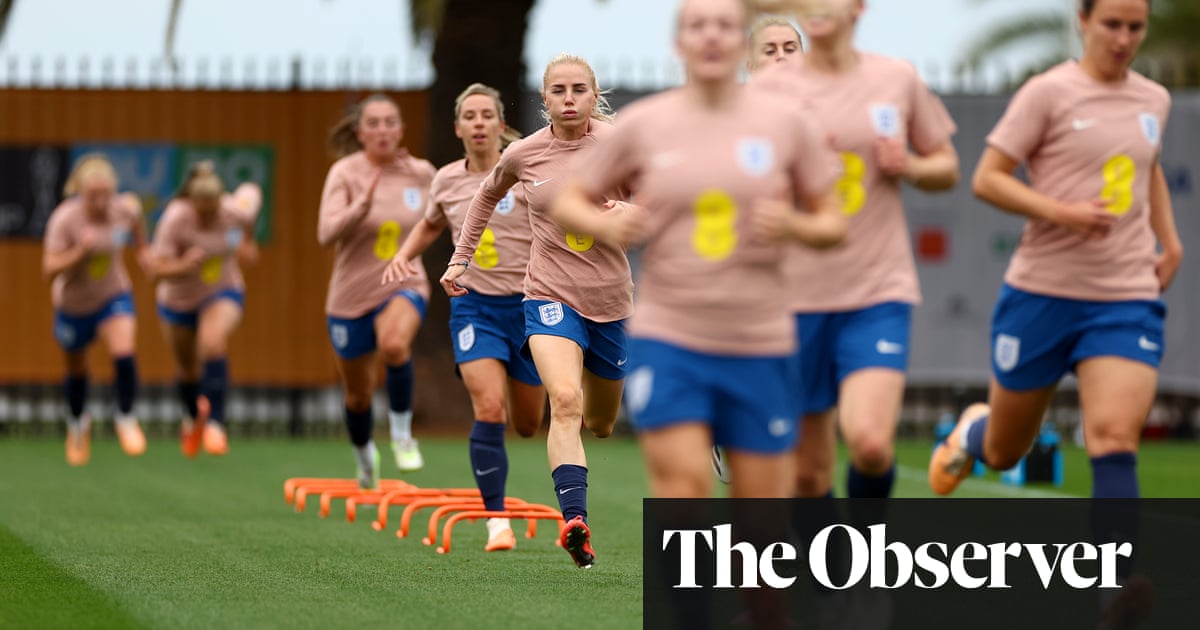
As one of seven teams to have qualified for all nine Women’s World Cups, Nigeria will not regard themselves as underdogs against England on Monday. Admittedly, the Super Falcons have never progressed beyond the quarter-finals but, after beating Australia 3-2 and drawing 0-0 with the Olympic champions, Canada, their confidence is high.
It probably suits Randy Waldrum’s side that a lot of England fans are likely to underestimate them, but Sarina Wiegman will know an awful lot hinges on the quality and discipline of her team’s press in their new 3-5-2 formation.
In surprising almost everyone by switching to a back three for England’s final group game against China, the England manager was brave and very smart while proving she can be flexible and adaptable after all.
Arguably, it came about inadvertently after the loss of Keira Walsh with a knee injury, but it allowed England to really flourish during the 6-1 deconstruction of a side lacking a significant attacking threat.
Considering international managers have so little time to fine-tune, let alone rehearse, major tactical changes last week’s shape shift took considerable courage. But I hope – and expect – Wiegman will stick with a system that uses all the best attributes of England’s players.
They next face a Nigeria team possessing top-class forwards in Racing Louisville’s Uchenna Kanu and, particularly, Barcelona’s trophy‑laden Asisat Oshoala. They are part of a squad packed with players from assorted continents. That cumulative experience and exposure to a wide variety of playing styles in countries as tactically diverse as Spain, France, Russia and the United States helps makes Nigeria dangerous, especially on the counterattack.
England played with real fluidity and evident enjoyment against China, with the influential wing-backs, Lucy Bronze and Rachel Daly, enabling them to press higher up the pitch. This allowed Lauren James to showcase her exceptional talent and wonderful vision by making the most of a free role linking midfield and attack in a broadly 3-5-2, sometimes 3-4-1-2, formation.
Walsh remains a big loss and I’d love to see her fit and playing in England’s new set-up. Given she is accustomed to being so pivotal to the team’s play that almost everything goes through her, adapting to being part of a midfield three rather than a two could take some adjustment.
Space would have to be shared and Walsh might initially find that difficult but I’m sure she’d work things out. Players of her rare calibre can shine in any configuration. There is certainly no midfielder quite like her in England’s squad.
That said, Katie Zelem, Walsh’s replacement against China, played smartly and sensibly, cleverly backing up and protecting James in a way that reflects their former relationship as Manchester United teammates.
James’s ability to operate in half-spaces and channels make her very difficult to defend against but her wonderful performance was almost certainly enhanced by having played club football with Zelem. On-pitch relationships are so important and a huge part of the enjoyment that comes from being part of a successful team.
The good news for England is that they have plenty of them with Alessia Russo and Lauren Hemp looking happier and less isolated, operating as an attacking pair. Rather like the injured Beth Mead, Hemp can play as a winger and centrally. Her pace and unpredictability should trouble Nigeria.
Further back, Jess Carter, Millie Bright and Alex Greenwood are so well suited to working alongside each other that England’s back three composition looks a work of genius. As Chelsea teammates, Carter and Bright know each other’s games inside out while Millie has always enjoyed combining with Greenwood.
For a left-footer also comfortable at left-back, Greenwood’s latest deployment, on her preferred side of the trio, is ideal and offers England natural balance.
Bright’s central role involves chaperoning the defence and she knows it well. Against China, in her third competitive game since returning from knee surgery, England’s captain looked sharper, anticipated things more easily and had the confidence to intercept more quickly. As with Greenwood, this system allows Bright to use her distribution skills to initiate attacks, often through diagonal balls.
One of England’s strengths is an ability to be stylistic chameleons, alternating between possession football and a more direct approach, and their defenders are key to that. Carter is brilliant in one-against-one situations. Strong and quick, she has an important role in covering the spaces Bronze leaves behind when she attacks.
Even so, Bronze and Daly will shoulder a lot of responsibility against Nigeria. Nigeria have played 4-2-3-1 in this tournament and the bad news for Wiegman is that if you want to counter 3-5-2, that default formation often proves ideal. Opponents organised in a 4-2-3-1 shape could make England vulnerable in wide areas, especially if Nigeria’s full-backs, Michelle Alozie and Ashleigh Plumptre, are constantly looking to combine with their wingers.
That could create overloads, which would leave England defensively outnumbered and vulnerable to counterattacks. The solution is to ensure England’s press is well executed and sufficiently on the front foot to pin Alozie and Plumptre into corners, potentially nullifying their threat.
Let’s hope the Lionesses can once again translate theory into practice.












